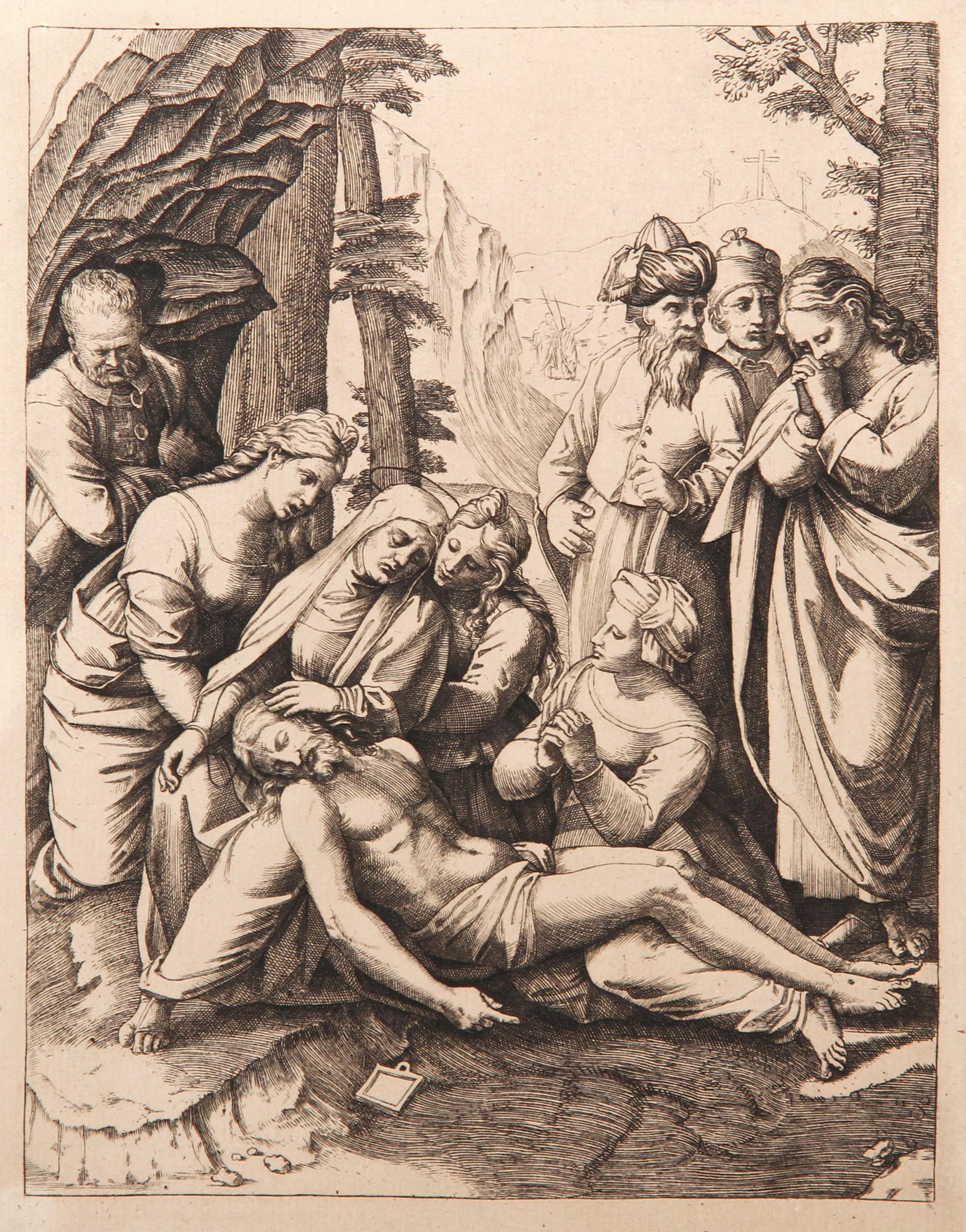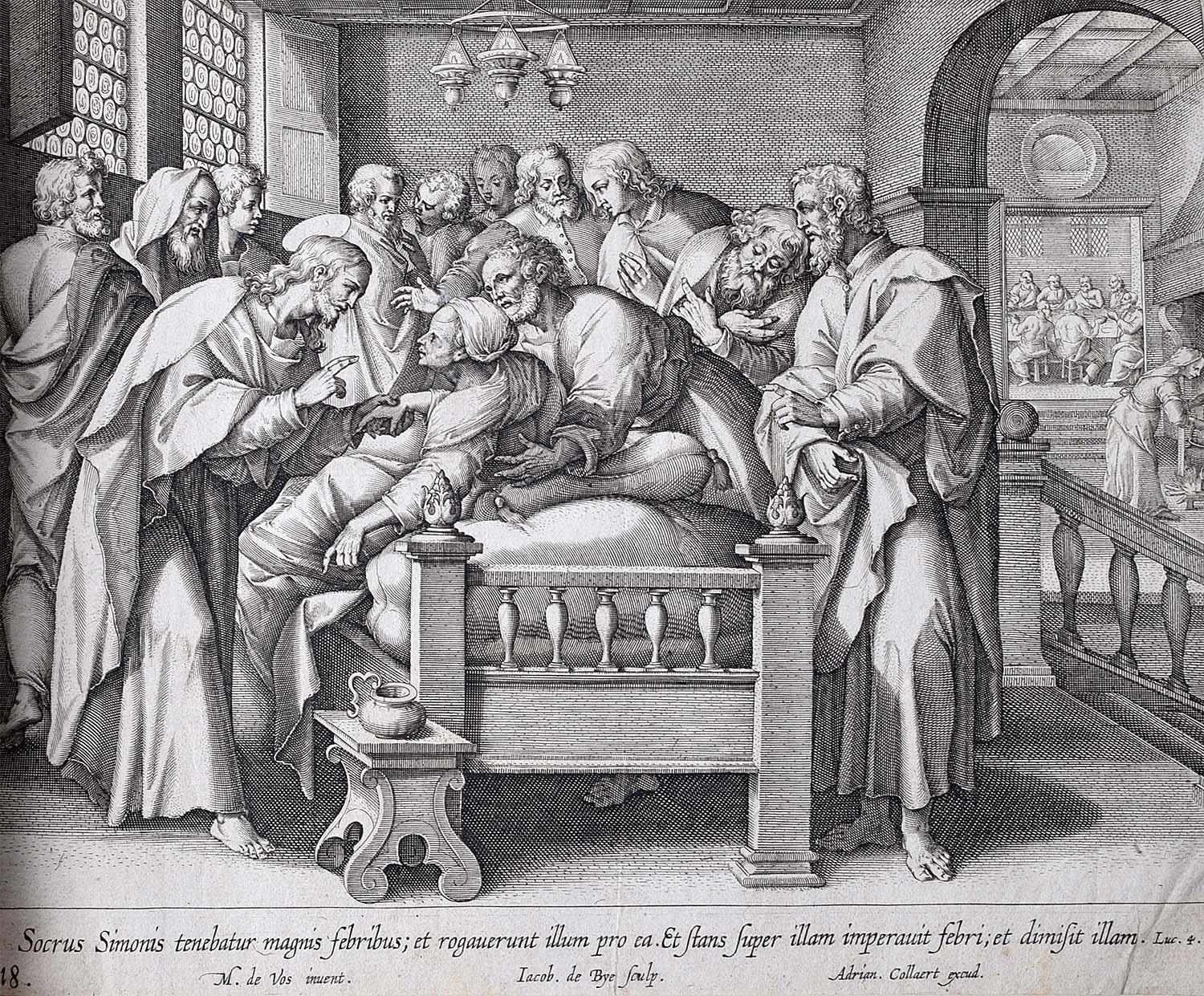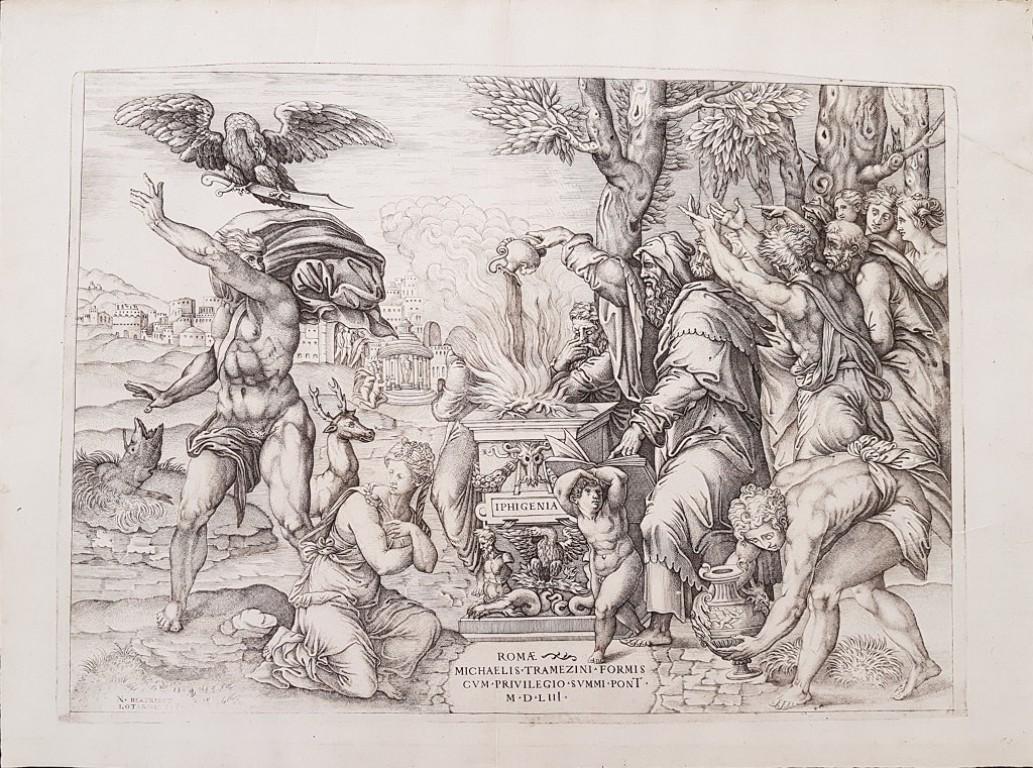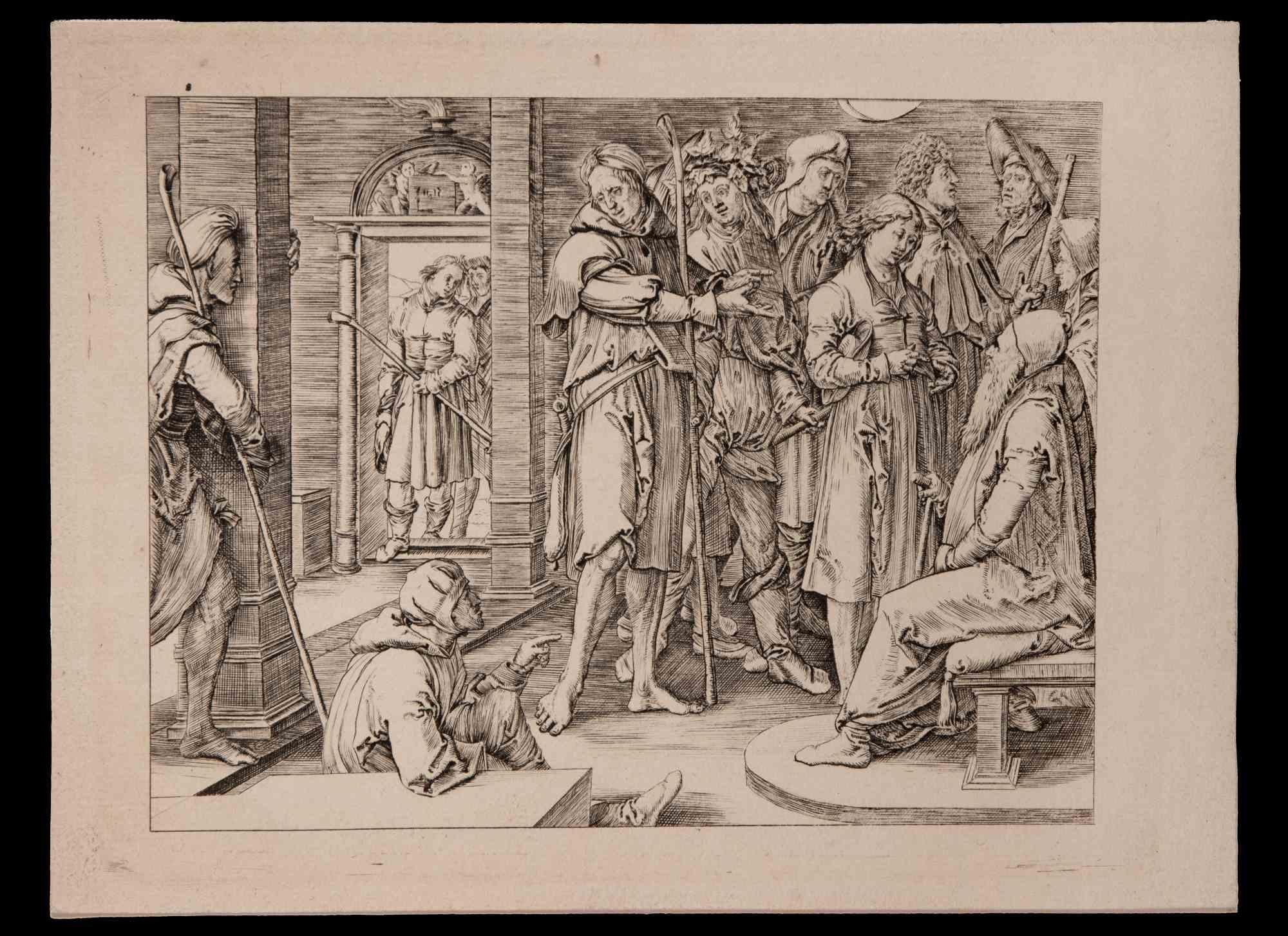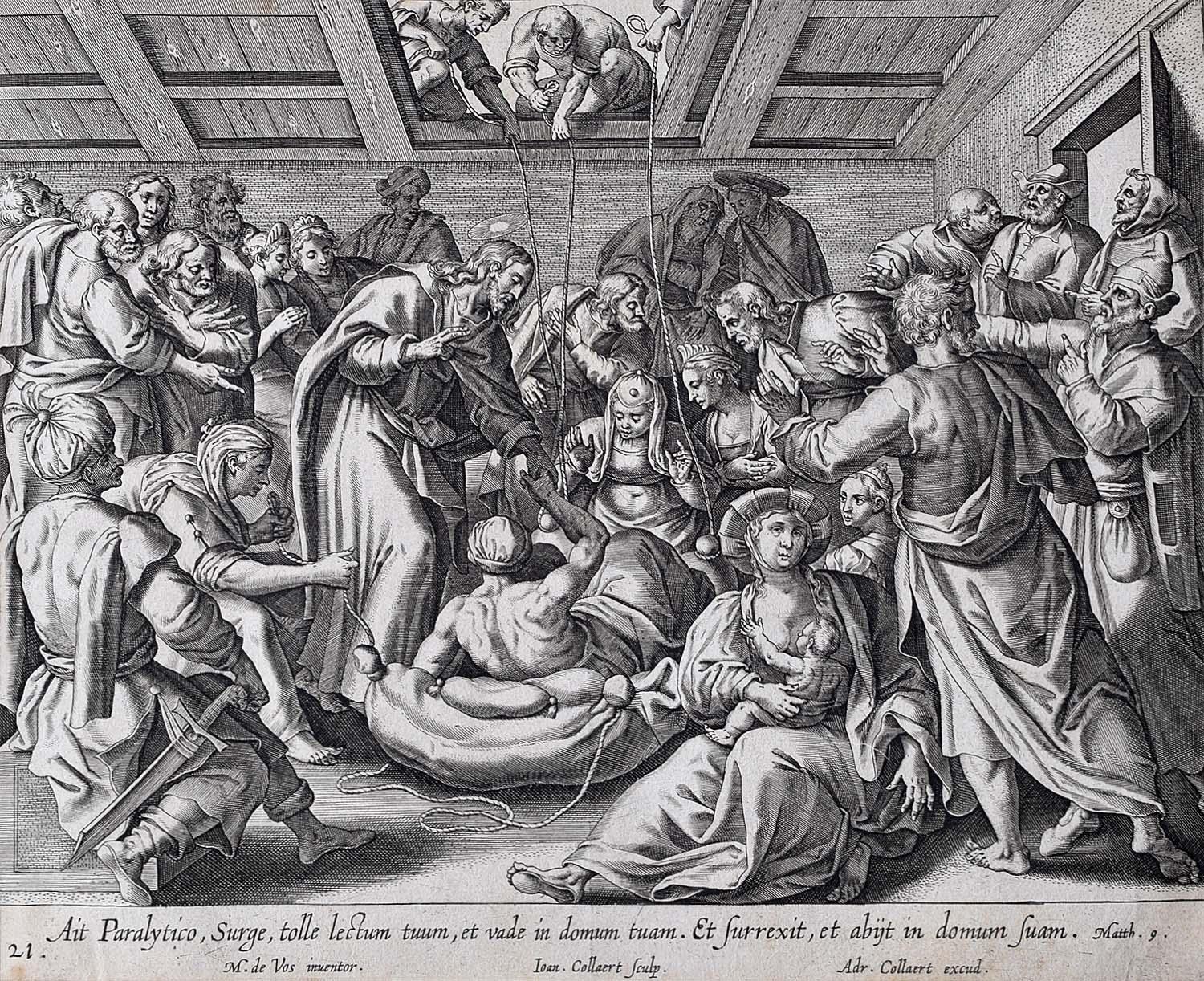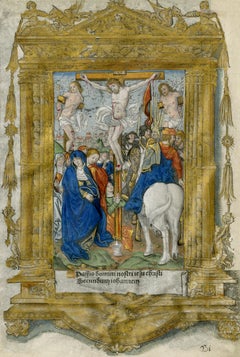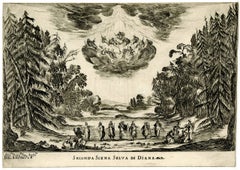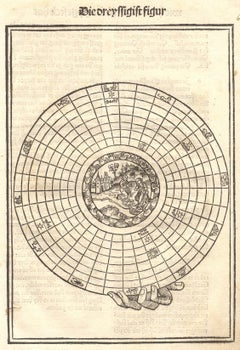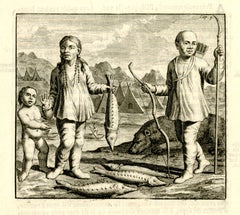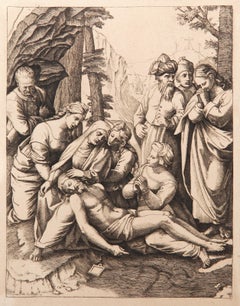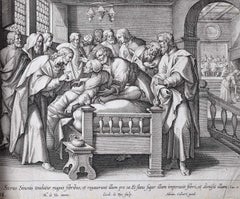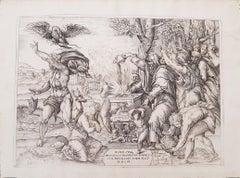Items Similar to The Death of Lazarus
Want more images or videos?
Request additional images or videos from the seller
1 of 7
Hieronymus WierixThe Death of Lazarus1593
1593
$300
£234.26
€265.92
CA$431.56
A$469.79
CHF 247.65
MX$5,688.59
NOK 3,122.21
SEK 2,924
DKK 1,985.04
About the Item
The Death of Lazarus
Engraving, 1593
Feria VI. Post Domin IIII
From: Evangelicae Historiae Imagines, Plate 76
Condition: Excellent
Sheet size: 9 7/8 x 6 1/8 inches
Reference: Reference: Mauquoy-Hendrickx, Marie. Les Estampes des Wierix. Brussels: Bibliothèque royale Albert Ier, 1978
Hieronymus Wierix (1553–1619) was a Flemish engraver, draughtsman and publisher. He is known for his reproductive engravings after the work of well-known local and foreign artists including Albrecht Dürer. Together with other members of the Wierix family of engravers he played an important role in spreading appreciation for Netherlandish art abroad as well as in creating art that supported the Catholic cause in the Southern Netherlands.
Life
Hieronymus Wierix was born in Antwerp as the son of Anton Wierix I (c. 1520/25–c. 1572). His father Anton was registered as a painter in 1545–6 but is occasionally also referred to as a cabinet maker. It is not believed that Anton I taught Hieronymous or his other two sons Johannes and Anton II. Hieronymus and Johannes are believed to have trained with a goldsmith while Anton II likely trained with an older brother, probably Johannes. After his father death Hieronymus was placed under the guardianship of Sanson Catsopyn and Jheronimus Mannacker.
His first engraving as independent master dates back to 1577. During the period of 1577–1580, he made a lot of prints for Willem van Haecht the Elder and Godevaard van Haecht. These works of him were mainly allegorical and political, where he reflected his sympathy for those who rebelled against the Spanish.
Listed as Lutherans at the time of the Fall of Antwerp in 1585, the family members seem to have reconverted to Catholicism soon thereafter. The three Wierix brothers gained a reputation for their disorderly conduct as evidenced by a 1587 letter by prominent publisher Christophe Plantin to the Jesuit priest Ferdinand Ximenes in which he complained that whoever wanted to employ the Wierix brothers had to look for them in the taverns, pay their debts and fines and recover their tools, since they would have pawned them. Plantin also wrote that after having worked for a few days the brothers would return to the tavern.
His apprentices were Abraham van Merlen, Jan Baptist van den Sande the elder, and Jacob de Weert. His daughter Christina married the engraver Jan Baptist Barbé, who later had his other daughter Cecilia (his sister-in-law) declared insane in order to claim her inheritance, which included a set of Dürer drawings.
Work
Wierix is mostly known for his "very delicate religious prints on a very small scale". In 1570, Wierix worked in master work of Christoph Plantin where he was mastering engraving. He was only seventeen when he made his first engraving for Plantin. He made about 120 engravings for Plantin from 1569 to 1576. Courtesy Wikipedia
- Creator:Hieronymus Wierix (1553 - 1619, Flemish)
- Creation Year:1593
- Dimensions:Height: 9.88 in (25.1 cm)Width: 6.13 in (15.58 cm)
- Medium:
- Movement & Style:
- Period:
- Condition:
- Gallery Location:Fairlawn, OH
- Reference Number:Seller: FA96961stDibs: LU14015510152
About the Seller
5.0
Recognized Seller
These prestigious sellers are industry leaders and represent the highest echelon for item quality and design.
Gold Seller
Premium sellers maintaining a 4.3+ rating and 24-hour response times
Established in 1978
1stDibs seller since 2013
820 sales on 1stDibs
Typical response time: <1 hour
Associations
International Fine Print Dealers Association
- ShippingRetrieving quote...Shipping from: Akron, OH
- Return Policy
Authenticity Guarantee
In the unlikely event there’s an issue with an item’s authenticity, contact us within 1 year for a full refund. DetailsMoney-Back Guarantee
If your item is not as described, is damaged in transit, or does not arrive, contact us within 7 days for a full refund. Details24-Hour Cancellation
You have a 24-hour grace period in which to reconsider your purchase, with no questions asked.Vetted Professional Sellers
Our world-class sellers must adhere to strict standards for service and quality, maintaining the integrity of our listings.Price-Match Guarantee
If you find that a seller listed the same item for a lower price elsewhere, we’ll match it.Trusted Global Delivery
Our best-in-class carrier network provides specialized shipping options worldwide, including custom delivery.More From This Seller
View AllCrucifixion
Located in Fairlawn, OH
Jean Pichore workshop, 1500-1541
Crucifixion
Metal cut engraving printed on vellum with vintage hand coloring
c. 1500-1541
Miniature (image) size: 4 3/4 x 3 1/8"
Including decorated ...
Category
16th Century Old Masters Figurative Prints
Materials
Engraving
Scene II, Le Nozze Degli Dei
By Stefano Della Bella
Located in Fairlawn, OH
Scene II, Le Nozze Degli Dei
Etching, 1637
Signed in the plate lower left
The scene depicts the initial moment when Diana is revealed, surrounded by her nymphs, celebrating a success...
Category
1630s Old Masters Landscape Prints
Materials
Etching
Father Stefan Fridolin, "Schatzbehalter" (Treasury of the True Riches
Located in Fairlawn, OH
Father Stefan Fridolin, "Schatzbehalter" (Treasury of the True Riches of Salvation): The 30th Figure - Astrological Diagram with Scene of the Nativity
Woodcut, 1491
Unsigned, as issued
Published by Anton Koberger
Diagram has Zodiac signs on outer ring, planets in the lower registers, and Nativity in the center.
Condition: Very good for a 15h century woodcut, with the usual slight age stains
Sheet size: 11 1/2 x 8 1/4 inches
Wogelmut was the teacher of Albrecht Durer and employed young Durer in many project of the last decade of the 15th century.
Michel Wolgemut Biography
Wolgemut trained with his father Valentin Wolgemut (who died in 1469 or 1470) and is thought to have been an assistant to Hans Pleydenwurff in Nuremberg. He worked with Gabriel Malesskircher in Munich early in 1471, leaving the city after unsuccessfully suing Malesskircher's daughter for breach of contract, claiming she had broken off their engagement. He then returned to his late father's workshop in Nuremberg, which his mother had maintained since Valentin's death.
In 1472 he married Pleydenwurff's widow and took over his workshop;[3] her son Wilhelm Pleydenwurff worked as an assistant, and from 1491 a partner, to Wolgemut. Some consider Wilhelm a finer artist than Wolgemut, however he died in January 1494, when he was probably still in his thirties. Wilhelm's oeuvre remains unclear, though works in various media have been attributed to him.
Woodcuts
Michael Wolgemut, Danse Macabre, 1493
Two large and copiously illustrated books have woodcuts supplied by Wolgemut and his stepson Wilhelm Pleydenwurff; both were printed and published by Germany's largest publisher, the Nuremberger Anton Koberger, who was also Dürer's godfather. The first is the Schatzbehalter der wahren Reichthumer des Heils (1491); the other is the Historia mundi, by Schedel (1493), usually known as the Nuremberg Chronicle...
Category
15th Century and Earlier Old Masters Figurative Prints
Materials
Woodcut
Ostiakes
By Cornelis de Bruijn
Located in Fairlawn, OH
Ostiakes
Engraving, 1718
From: Voyages de Corneille le Brun par la Moscovie, en Perse, et aux Indes Occidentales (French translation, 1718), Chapter XXI
The Ostyak are a member of an...
Category
1710s Old Masters Landscape Prints
Materials
Engraving
The Garden of Love (after Peter Paul Rubens [1577-1640]
By Christoffel Jegher
Located in Fairlawn, OH
The Garden of Love (after Peter Paul Rubens [1577-1640])
Woodcut diptych, c. 1633-1636
Each of the two sheets is signed in the plate lower right
A posthumous impression with tiny wor...
Category
17th Century Old Masters Figurative Prints
Materials
Woodcut
Bacchanal
By Giovanni Andrea Podestà
Located in Fairlawn, OH
Bacchanal
Etching, 1649
Inscribed in the square left: "Magnificentis/simo Principi/Paolo lorda/no. II Bracci/ani Duci/Aud. P.DDD/1640; Inscribed on right: Rome apud Franciscsum Saluucium
Condition: Usual centerfolds from paper manufacture
Plate: 10 3/8 x 15 1/2"
Sheet: 11 1/2 x 16 1/2";
References:
Bartsch XX.4
Sopher Plate 145
An impression of this image is in the collections of the Philadelphia Museum of Art and the National Gallery of Art, Washington
An exceptionally rich impression in excellent condition.
From Wikipedia, the free encyclopedia
Putti as Allegory of Music
Giovanni Andrea Podestà or Giovanni Andrea Podesta (1608 - c. 1674) was an Italian painter and engraver who was principally active in Rome. His principal subject matter is children playing in landscapes with classical objects. His works show the influence of Poussin's Arcadian landscapes and bacchanals, which were ultimately derived from Titian's bacchanals.
Life
Giovanni Andrea Podestà was born in Genoa. He was formed in Genoa with Giovanni Andrea de Ferrari and Domenico Fiasella according to the information provided by the contemporary Genoese biographer Raffaele Soprani. He is also recorded as an apprentice of Giovanni Battista Paggi in 1627.
His presence is documented from in 1634 in Rome where he made drawings after the statues and ancient reliefs at the famous Giustiniani collection. These were subsequently engraved for publication in the 'Galleria Giustiniani'. The artist's career ran a course similar to that of the young Domenico Fiasella. In Rome his art evolved in contact with the works of Poussin, Andrea di Leone, Pietro Testa...
Category
17th Century Old Masters Figurative Prints
Materials
Etching
You May Also Like
Les Maries pleurant le corps mort de Jesus Christ, Heliogravure
By Marcantonio Raimondi
Located in Long Island City, NY
Marcantonio Raimondi, After by Amand Durand, Italian (1480 - 1534) - Les Maries pleurant le corps mort de Jesus Christ, Year: 1875, Medium: Heliogravure on Laid Paper, Size: 9 x 7 ...
Category
1870s Old Masters Prints and Multiples
Materials
Etching
Adrian Collaert Martin de Vos 17th Century Healing Peter's Mother-in-law
By Adriaen Collaert
Located in London, GB
We have the full series of 52 prints (including title page) from Vita Passio et Resurrectio Iesu Christi listed. To find the others scroll down to "More from this Seller" and below i...
Category
17th Century Realist Figurative Prints
Materials
Engraving
Death of the Virgin (Old Master drawing)
Located in Wilton Manors, FL
Old Master drawing, Death of the Virgin Surrounded by Apostles, ca. 17th century.
Ink pen and wash on paper. Sheet measuring 11 x 15.5 inches. Framed measurement: 18.5 x 23.5 inches...
Category
17th Century Old Masters Figurative Drawings and Watercolors
Materials
Ink
The Sacrifice of Iphigenia
By Nicolas Beatrizet
Located in Roma, IT
Black and white etching and drypoint on wire rod paper, representing the myth of the sacrifice of Iphigenia. On the altar is inscribed "Iphigenia" in capital letters. On the lower left margin is inscribed "N. Beatrizet Lo Taringus F.", slightly discolored (Beatrizet usually signed his plates with the letters "N. B. L. F."). At the center of the lower margin is inscribed "Romae, Michaelis Tramezini formis cum privilegio summi Pont. M.D.L.III".
After a drawing attributed to either Michelangelo Buonarroti, Salviati, or Baccio Bandinelli...
Category
16th Century Old Masters Figurative Prints
Materials
Drypoint, Etching
Joseph - Burin Print after Lucas van Leyden - 19th century
By Lucas van Leyden
Located in Roma, IT
Joseph interpret his dream to Jacob is an original artwork realized after Dutch artist Lucas van Leyden (1494 –1533). Later reprint, probably of the e...
Category
19th Century Modern Figurative Prints
Materials
Engraving
Adrian Collaert Martin de Vos 17th Century engraving Jesus Heals the Paralytic
By Adriaen Collaert
Located in London, GB
We have the full series of 52 prints (including title page) from Vita Passio et Resurrectio Iesu Christi listed. To find the others scroll down to "More from this Seller" and below it click on "See all from this Seller" and search for 'Collaert' - or message us as they may not all have been uploaded yet.
Adriaen Collaert (c. 1560-1618) after Maerten de Vos...
Category
17th Century Realist Figurative Prints
Materials
Engraving
